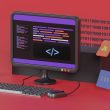In today’s academic and professional environments, plagiarism detection tools play a vital role in maintaining the integrity of written content. These tools use complex algorithms to identify copied or closely paraphrased content from billions of online sources and databases. However, one area that often raises questions is how these detectors handle material laden with technical terminology, especially in fields like science, law, or engineering. Understanding how detectors evaluate such content offers insights into both their capabilities and their limitations.
What Makes Technical Terminology Unique?
Technical terminology refers to terms, phrases, and standard expressions that are widely accepted in a specific discipline. For example, terms like “quantum entanglement” in physics or “force majeure” in legal writing are standard phrases that cannot be easily reworded without losing meaning or accuracy.
This presents a challenge for plagiarism detectors, which are designed to flag text that appears too similar to existing sources. If a tool treated all technical terms as potential plagiarism, it would result in a high number of false positives, rendering its reports less useful.
[ai-img]plagiarism detection, artificial intelligence, algorithms[/ai-img]How Plagiarism Detectors Analyze Technical Content
Most modern plagiarism detection systems rely on a combination of the following technologies:
- Natural Language Processing (NLP): Helps the tool understand the context of the content, not just individual words or phrases.
- Machine Learning Models: Learns from large datasets to differentiate between common usage and copied content.
- Fingerprinting Algorithms: Break content into small sections to look for exact or near matches across various databases.
When dealing with technical terminology, these tools often apply contextual analysis to differentiate between standard jargon and unique phrasing. Terms known to appear frequently in academic papers or textbooks are usually treated as common knowledge and are less likely to raise red flags.
Thresholds and Phrase Pattern Recognition
Plagiarism detectors usually set thresholds for similarities. If only a few lines in a document match another source and consist of well-known terminology, this may not be considered a violation. However, problems arise when entire segments of explanatory text—especially in literature reviews or background sections—are too similar to their sources, even if they are technically accurate.
Because of this, many advanced detectors use phrase pattern recognition to analyze how technical terms are embedded in broader sentences. If the sentence structure around a term is highly unique or creative and still matches another source, it may be flagged regardless of the common usage of the term itself.
Human Oversight Is Still Essential
Despite these advancements, it’s important to remember that no plagiarism detection tool is perfect. Human oversight is crucial, especially for documents heavy in domain-specific language. Academic institutions and publishers often rely on expert reviewers who can tell the difference between proper use of technical terms and actual textual theft.
For instance, in scientific research, it’s acceptable and often necessary to reuse certain phrases precisely because they convey specific methodologies or results. A trained reviewer can assess whether such repetitions are justified or if they constitute lazy writing or outright plagiarism.
[ai-img]academic writing, technical documents, plagiarism review[/ai-img]Tips for Writing with Technical Terminology While Avoiding Plagiarism
Here are a few best practices to help writers stay within ethical boundaries when using technical terms:
- Cite Your Sources: Even if terminology is standard, the context in which it’s used may not be. A proper citation acknowledges the original source.
- Paraphrase When Appropriate: Instead of copying entire sentences, try to reframe ideas in your own words when possible.
- Include Original Analysis: Add your own commentary or interpretation around technical terms to distinguish your work from source material.
- Use Quotation Marks: For universally recognized phrases or definitions, quotation marks and proper attribution can keep you in the clear.
Conclusion
While plagiarism detection tools have grown increasingly sophisticated, they are built to accommodate the repetitive nature of technical terminology. By leveraging context-aware algorithms and extensive databases, these tools aim to distinguish between legitimate use of common language and actual content duplication. Still, the nuanced evaluation of technical content often requires a blend of automated detection and human judgment. Writers can best protect themselves by understanding how these systems work and by adopting ethical writing practices from the start.






